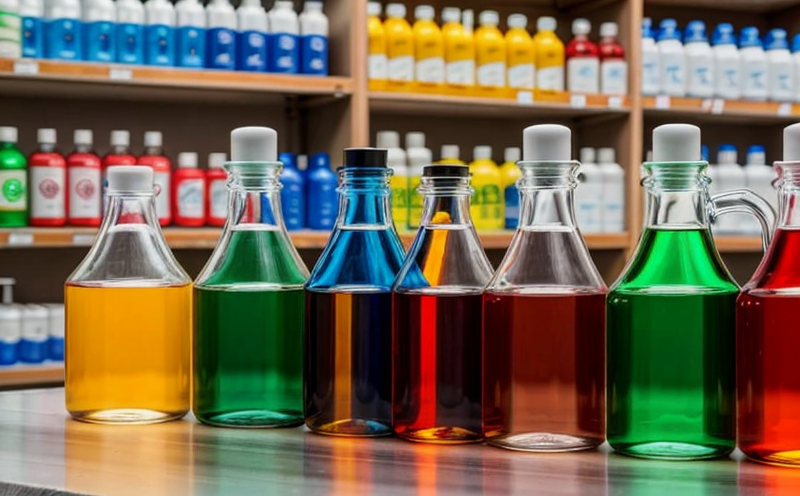Laboratory testing for formaldehyde release in fabrics
Formaldehyde is a common chemical used in various industries to enhance fabric properties such as durability, wrinkle resistance, and overall quality. However, high levels of formaldehyde can be harmful if not properly controlled during the manufacturing process. For this reason, textile manufacturers are required by law to ensure that their products meet strict limits on formaldehyde release.
Our laboratory provides comprehensive testing services for assessing the formaldehyde content in fabrics and determining its release under different conditions. This service is critical for ensuring product safety and compliance with international standards such as ISO 14929, which specifies test methods for formaldehyde emission from textiles.
The process begins with the selection of appropriate samples based on the type of fabric and intended use. We follow standardized procedures to prepare these samples according to the specific requirements outlined in industry standards like ASTM D3352 or EN 14987, which cover formaldehyde testing for textiles.
Once prepared, the samples undergo rigorous testing using advanced analytical instruments designed specifically for detecting trace amounts of formaldehyde. These include gas chromatography-mass spectrometry (GC-MS) systems capable of identifying even minute concentrations of this compound. Our laboratories adhere strictly to recognized protocols such as ISO 17025, ensuring accurate and reliable results.
After completing the analyses, our experts generate detailed reports that outline both the total amount of formaldehyde present in the fabric and its potential release into the environment during normal usage conditions. These findings are essential for manufacturers to make informed decisions about product development and quality control measures necessary to meet regulatory requirements.
The importance of accurate formaldehyde testing cannot be overstated, especially given recent concerns regarding off-gassing from synthetic materials used in clothing items like pajamas and children's wear. By partnering with our laboratory, companies can ensure they are producing safe products while also maintaining a competitive edge through superior quality assurance practices.
In summary, our formaldehyde testing service offers valuable insights into the safety of your textile products by providing precise measurements of formaldehyde content and release rates under various simulated conditions. Whether you're developing new fabrics or auditing existing processes, we can help you stay ahead of regulatory changes and market demands.
Applied Standards
- ISO 14929: This international standard provides guidelines for testing formaldehyde emissions from textiles. It covers both laboratory-based tests as well as real-world simulations.
- ASTM D3352: Developed by the American Society for Testing and Materials, this method describes how to determine volatile organic compounds (VOCs), including formaldehyde, in air samples collected from textiles.
- EN 14987: European Norm specifies procedures for measuring formaldehyde content directly within textile products rather than relying on indirect methods like emission tests.
Quality and Reliability Assurance
We understand that the accuracy of our test results is paramount to your business success. That’s why we maintain rigorous quality assurance protocols at every stage of our formaldehyde testing process.
All samples are prepared meticulously following established procedures, ensuring consistency across all tests conducted here in our lab. Our state-of-the-art equipment, calibrated regularly against National Standards, guarantees precise measurements free from errors or inconsistencies. Additionally, we employ highly trained professionals who possess extensive experience interpreting complex data sets and translating them into actionable insights.
Our commitment to excellence extends beyond just technical proficiency; it also includes transparency regarding our methods and results. Every report issued by our team is accompanied by clear explanations of the tests performed along with recommended actions based on those findings. You can trust us to provide you not only accurate data but also thoughtful recommendations that will help guide your decision-making processes.
In short, whether you need routine monitoring or one-off assessments, our laboratory delivers consistent, reliable outcomes every time. By partnering with us, you gain access to an unparalleled level of expertise dedicated solely towards helping textile companies like yours achieve compliance and peace-of-mind.
Use Cases and Application Examples
In the textile industry, formaldehyde testing is crucial for several key applications:
- Pajamas and children's wear: Given concerns about off-gassing from synthetic materials, thorough testing ensures these garments remain safe.
- Sportswear: High-performance fabrics often require additional treatments that could affect formaldehyde levels; regular checks maintain product integrity.
- Care labels: Accurate information about formaldehyde content allows manufacturers to provide correct care instructions, enhancing customer satisfaction.





